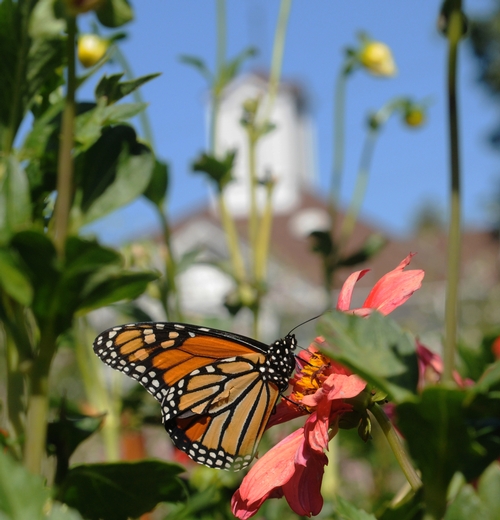
"One generation of monarch butterflies flutters some 2000 miles between southern Canada and central Mexico," writes LiveScience senior writer Wynne Parry in her piece, "Life's Little Mysteries" posted Nov. 4 on the LiveScience website.
And some other animal migrations are even more incredible.
Parry explores the topic, "Why Do Animals Migrate?" in her excellent article, and quotes Hugh Dingle (right), emeritus professor of entomology at the University of California, Davis and a noted authority on animal migration.
Why don't migratory animals select a "shorter, simpler journey or stop altogether?" Parry asks.
"The simple answer is that the benefits of long-distance migration outweigh its costs and the benefits of shorter distances," replies Dingle.
Indeed, the monarch butterfly's migratory efforts pale in comparison to the humpback whale and the shorebird, the bar-tailed gotwit.
Humpback whales travel as much as 5000 miles one way, Parry says. But the bar-tailed godwit, "holds the record for the longest nonstop flight: 6,835 miles in eight days."
Parry points out animal migrations take their toll. "Their journeys aren't easy: migrants fast, swim upstream, fly nonstop, and face hungry predators and barriers built by humans. The journeys may be fatal to some; however, mortality data is difficult to obtain, according to Dingle."
"My own suspicion is that it's a lot less than people think," Dingle told her. "They just seem able to do it well."
Check out "Top 10 Most Incredible Animal Journeys" linked to her story. (And for more information on the monarch butterfly, be sure to access UC Davis butterfly expert Arthur Shapiro's website.)
Amazing, indeed!
Attached Images:

Monarch Butterfly